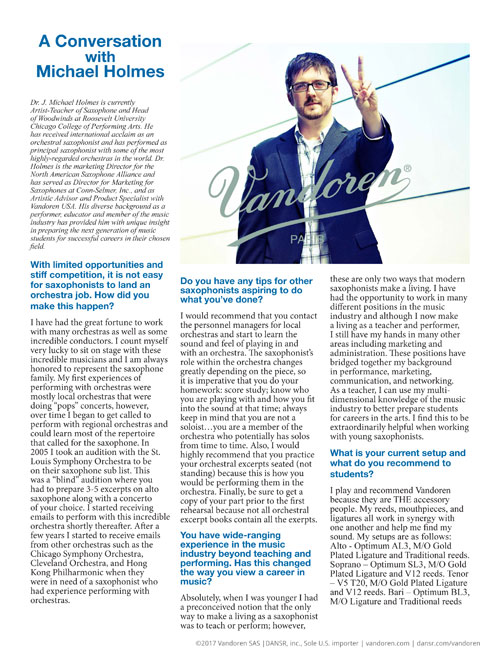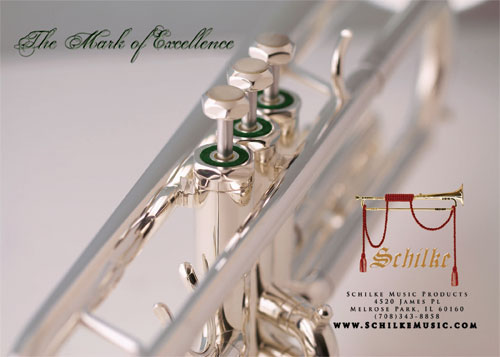Frederick Fennell once opened a clinic session I attended by repeating the old musician’s adage “If you can get a group to start together and end together you have accomplished the two most important things.” Although conductors may believe this is true, so many ensembles seem to lack the necessary precision in these two crucial performance areas. As conductors, we must put the blame on ourselves as we may not be providing the proper training or attention to detail required for accuracy in beginning and ending our musical selections.
“Watch me” or “Watch better” are phrases commonly used by conductors in rehearsals, but musicians need to be taught exactly what to watch for. They also need clear and meaningful gestures and should learn not only the visual but also the non-visual aspects of precise entrances and releases. The following strategies will help to improve precision in these important performance areas.
Entrances
Accurate and precise entrances begin with a clear and easily understandable preparatory beat. The preparatory beat should communicate everything the musicians need to know to start the piece together with the correct tempo, volume, and style. Because so much information must be relayed to the ensemble in the preparatory beat, it is the most important gesture a conductor will use.
Preparatory beats should begin with an ictus that serves as a reference point. This reference point informs the ensemble when to breathe to enter accurately after the rebound, which dictates the tempo and style indicators for the beginning of the piece. Care must be taken on the rebound to ensure that the gesture used matches the character of the music. For example, large gestures will work poorly with a fast tempo as there is too much distance for the arms to move in a short amount of time. In addition, large gestures are a poor choice for entrances that require softer volumes, just as small gestures are less than ideal for more powerful entrances. The preparatory beat (rebound included) is where the conductor sets the character of the entrance.
Following the rebound, the conducting gesture for the first beat should return to the original ictus reference point so the beginning and end of the prep beat are on the same vertical plane. This consistency gives the musicians confidence about the ictus as they begin to play because they know where it is located. Preparatory beat gestures that have starting and ending points on different vertical planes confuse the musicians, as they cannot gauge the amount of time in the beat and when to begin playing. This leads to ragged and imprecise entrances and frustration on the part of the ensemble members.
Pieces that begin on count one are usually the easiest on which to get accurate entrances. Ictus, rebound, and return to ictus point is the most natural of conducting gestures for ensemble entrances and count one entrances provide this. Entrances on counts two, three, and four are less natural and can lead to precision problems because the rebound of the prep beat moves more along the horizontal plane than the vertical. Regardless of the count of the entrance or the direction of the rebound, if the conductor provides an ictus reference point to begin the prep, then returns to it following the rebound, it will provide a clear starting point for the ensemble. Music that begins on the beat normally requires a preparatory beat of one count, while some conductors may choose a two-beat prep for extremely fast selections. For music that begins off the beat, I have had more success with a two beat prep, as it seems to offer better tempo and rhythmic stability for the musicians, particularly in younger ensembles.
While the visual aspect of accurate entrances is important, there are three other factors that if not addressed will lead to lack of precision: impulse of will, breathing, and listening. The conductor must portray an impulse of will, meaning he must show confidence and intent in gestures, to lead the ensemble. Gestures that are timid or lack energy will cause confusion and erode the musicians’ confidence in the conductor. Prepared conductors must embrace a musical approach to a piece and communicate that interpretation to the ensemble to help alleviate uncertainty.
The breath is the lifeblood of our music making, and breathing together is vital for accurate entrances. The conductor’s responsibility is to provide a preparatory beat showing the ensemble how to breathe for the entrance. This is accomplished during the rebound, which indicates the tempo, style and, volume of the music. When the conductor breathes with the ensemble, the probability of an accurate entrance is greatly increased.
Several years ago I watched Eugene Corporon rehearse a high school all-state band. His gestures were quite clear, but this ensemble of fine musicians was struggling to come in together. The students were in their first rehearsal with a new conductor, getting used to him and each other, and concerned about playing the printed music correctly. Corporon stopped and asked students to memorize their note for a specific chord in the music. He then asked the ensemble members to close their eyes and listen. After a few seconds of silence, he took a breath. The students heard this, breathed with him, and came in perfectly together – all without any visual stimulus from the conductor. This emphasized the fact that visual clarity, while important, will not ensure accurate entrances if breathing and listening are not an integral part of the entrance process. Since witnessing this exercise, I have used it with numerous ensembles of all ages, and it works every time. Sometimes, as conductors, we need to get out of our own way.
Entrances that are together with the correct style and tempo are the result of a combination of factors and skills from both the conductor’s and the ensemble’s perspective. The conductor should give a clear and easily readable preparatory beat that contains a beginning ictus reference point, a rebound that conveys the character of the music and when and how to breathe, and a return to the ictus to begin the music. Ensemble members must watch the conductor, breathe at the right time and speed, and listen carefully. All must be present for ensemble entrances to be their best.
Releases
The ensemble release at the end of a piece should also receive attention. The release must be together and in the correct tempo and character of the piece to bring the performance to a successful conclusion. Numerous gestures can be used to communicate the release to the musicians. Conductors are encouraged to continue to add gestures to their repertoire to capture the numerous styles of music available. One way to do this is to experiment with different gestures in rehearsals and individual practice, working to become comfortable and effective with them. However, it is still best to rely on tried and true gestural repertoire in performances.
Because of its versatility, an ictus release obtained by using the downbeat or other beat in the conducting pattern as the release point is one of the best ways to cut off an ensemble. The ictus release can be used in music of any tempo, volume, or character. In addition, it can be used for music that should be released in tempo or for sustained notes. The key to this release is for the conductor to provide a clear ictus point that signals the end of the piece. The ending character of the music is another consideration when using this release, as it is easy to over-conduct, especially in energetic works. The conducting gesture should provide the ensemble with the character required of the final note.
Circular cutoffs or the closing of the fingers of the left hand to end the music can be excellent gestures to gain a desired musical release, the important factor being a clear point of cessation of the music. The most effective circular cut-offs are a clockwise motion with the left hand (counterclockwise with the right hand) which begins and ends at 6:00, or the bottom of the circle. This provides a consistent starting and stopping point that will be easy for the musicians to decipher. As with the circular cut-offs, closing the fingers of the left hand for the release gesture must include either a slight ictus or point where the music ends. Such unconventional release gestures as a head nod or closing the mouth can be used in rehearsals with enjoyable results, but should only be used in performances if the conductor and the ensemble are confident it will yield the intended result.
Entrances and releases are among the most important considerations in ensemble performance. As conductors and educators we cannot expect success by leaving these areas to chance. We must expose our musicians to the various factors affecting entrances and releases, and, if necessary, spend additional rehearsal time perfecting them. The end product will be worth the effort.








